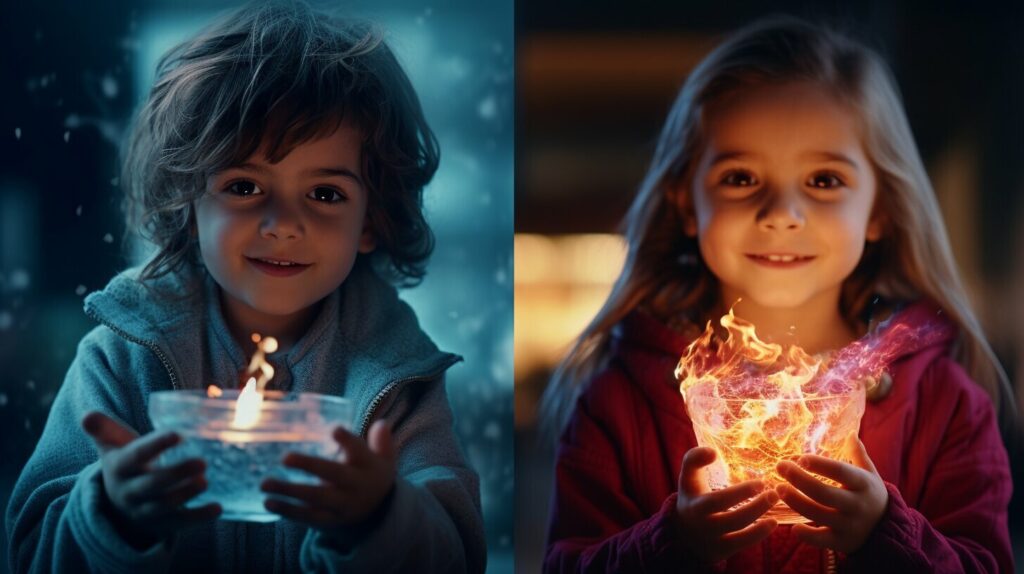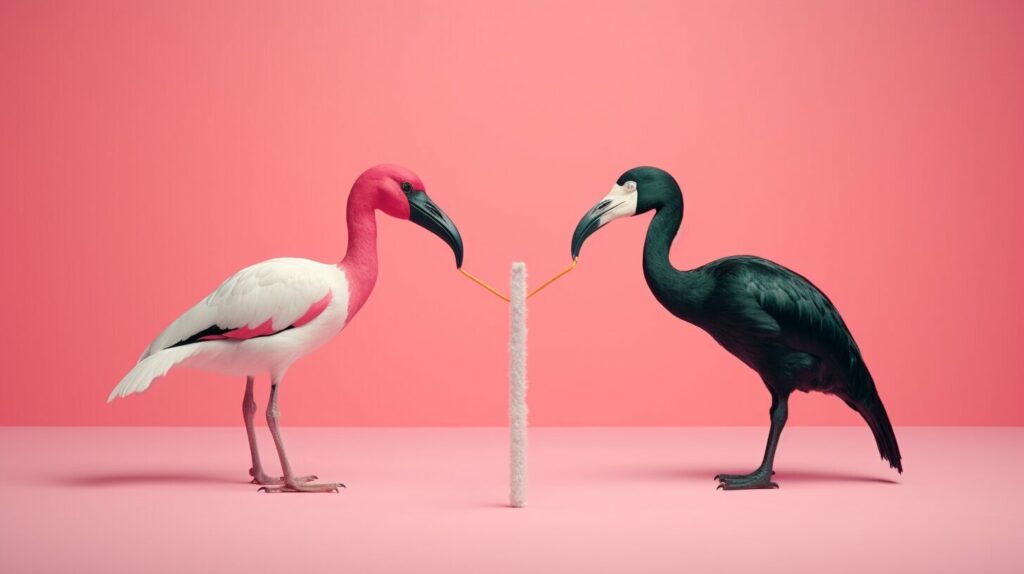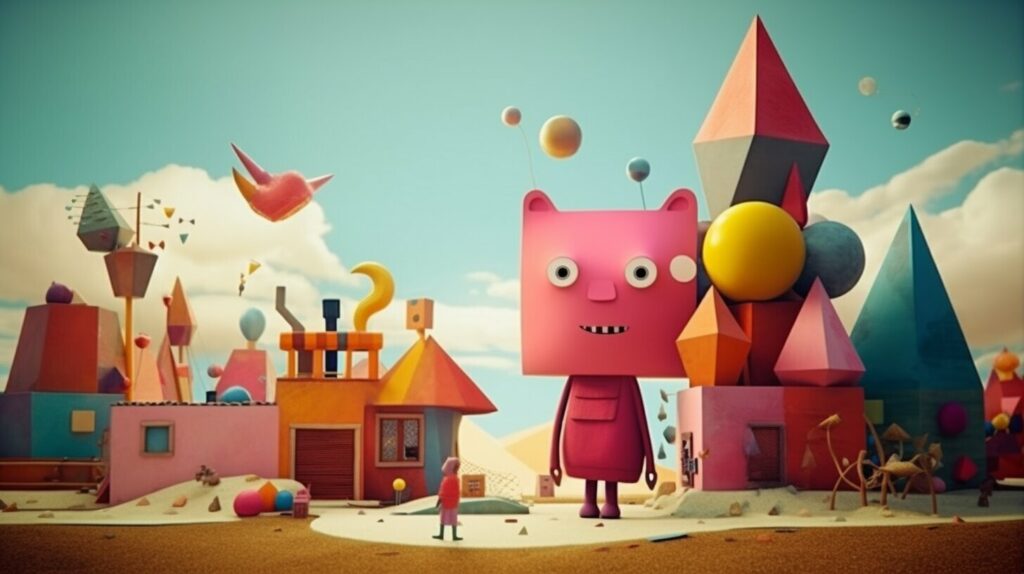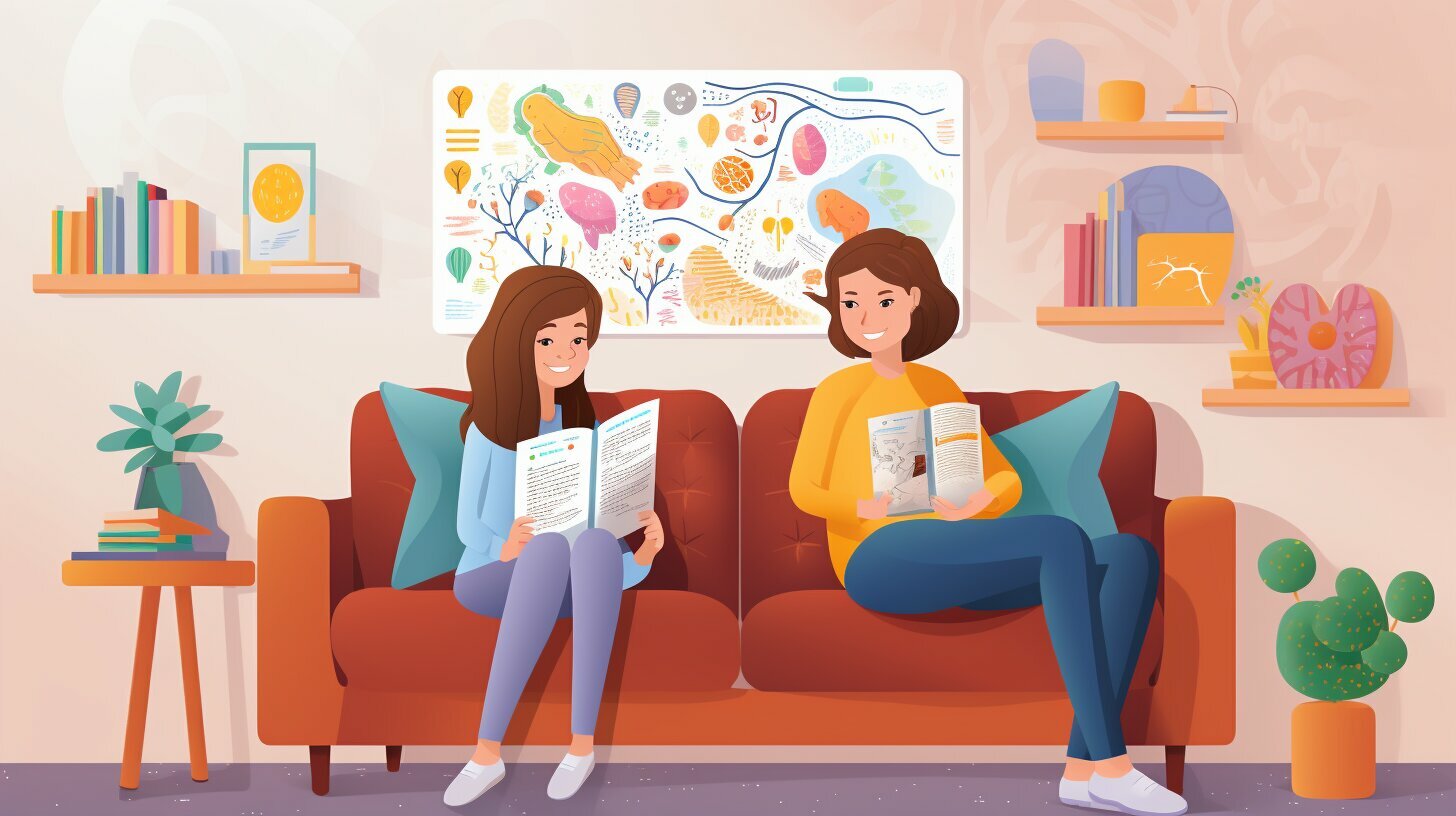As a parent, you want to help your child learn as much as possible. One of the fundamental concepts to teach your child is the concept of opposites. Understanding opposites is crucial for your child’s cognitive development and will aid in their comprehension of the world around them.
In this guide, we’ll discuss some straightforward, fun, and engaging strategies you can use to explain opposite to a child.
Key Takeaways:
- Opposites are essential for cognitive development
- Explaining opposites using fun activities aids in comprehension
- Visual aids like pictures and games can help reinforce the concept of opposites
What are Opposites?
Opposites are two things that have contrasting characteristics. For example, hot and cold, light and dark, big and small. Understanding the concept of opposites is important for a child’s cognitive development, as it helps them develop their language, thinking, and problem-solving skills.
However, explaining the concept of opposites to young children can be challenging. Here are some tips to simplify the concept and teach it effectively:
- Break it down: Start by explaining one set of opposites at a time. For example, begin with big and small, then move onto light and dark. This approach helps children understand and retain the information better.
- Use relatable examples: Young children learn best when they can relate the concept to their own experiences. Use simple, everyday examples that the child can understand, such as a big tree versus a small flower.
- Make it visual: Use pictures or objects to illustrate the concept of opposites. For example, show the child a big ball and a small ball, and explain how they are opposites.
- Encourage exploration: Let your child explore and experiment with different objects and concepts. For example, let them compare the weight of a heavy book and a light feather.

Teaching opposites to young children may take time and patience, but the rewards are worth it. By developing an understanding of opposites, children will be better equipped to communicate and problem-solve effectively.
Engage Your Child’s Curiosity
Children are naturally curious and love to explore the world around them. By tapping into this curiosity, you can help your child understand the concept of opposites more easily. Instead of simply telling your child what an opposite is, encourage them to ask questions and explore the concept through play and everyday experiences.
For example, you can ask your child questions like “What’s the opposite of up?” or “What’s the opposite of hot?” to help them start thinking about opposites. You can also challenge them to find opposite examples in their surroundings, like pointing out that a light switch turns “on” and “off.”
Involve your child in interactive activities that help them better understand opposites. For instance, you can play a game of “Simon Says” where your child has to do the opposite of what you say. You can also play a matching game where your child matches opposite word pairs.
Using your child’s natural curiosity as a tool can make learning about opposites more enjoyable and memorable for both you and your child.

Use Visual Aids
Children are visual learners, and using pictures and other visual aids can help them better understand the concept of opposites. You can create flashcards with opposite words such as “hot” and “cold” or “big” and “small.” Use pictures of objects or animals that children are familiar with to help them make the connection between the words and their meanings.
Another way to use visual aids is to create a chart or table with opposite word pairs. You can use a simple table like the example below:
| Opposite | Words |
|---|---|
| Up | Down |
| On | Off |
| Open | Close |
| Happy | Sad |
Using visual aids can make learning opposites more engaging and fun for children. It can also help them remember the words and their meanings more easily.
Remember to include images that are appropriate for your child’s age and development level.

Play Opposite Games
Playing games is a great way to help children understand the concept of opposites. There are many fun and engaging games you can play with your child that will teach them about opposites.
One game you can play is the “opposite game.” In this game, you say a word, and your child has to come up with the opposite. For example, you could say “hot,” and your child would say “cold.
Another game you can play is “Simon Says.” In this game, you give your child commands, but they should only follow them if you say “Simon says” before the command. For example, you could say, “Simon says, touch your head,” or “Simon says, jump up and down.” This game teaches children to listen carefully and identify the opposite of “Simon says.”
You can also use flashcards or a matching game to teach your child about opposites. Find or make cards with pictures of opposite concepts, like hot and cold or big and small, and have your child match them up.
Remember to keep the games lighthearted and fun. Children learn best when they are engaged and having fun!

Read Opposite Books
If you want your child to learn about opposites in a fun and engaging way, consider reading books that focus on this concept. Opposite books are a great way to introduce your child to the concept while providing an enjoyable reading experience. Look for books that have vibrant illustrations and simple text so that your child can easily understand the ideas.
Some popular opposite books for young children include:
- The Foot Book by Dr. Seuss
- Big and Little by Margaret Miller
- The Berenstain Bears’ Big Bedtime Book by Stan and Jan Berenstain
These books provide clear examples of opposites like big and little, up and down, and many more. Your child will love these stories and will learn about opposites at the same time.
Remember to ask your child questions about the book as you read to reinforce the concepts. For example, you could ask “What’s the opposite of big?” after reading about a big elephant in the story. This will help your child connect the ideas in the book to the real world.

Use Everyday Examples
When explaining opposites to your child, it can be helpful to use everyday examples that they can relate to. For example, you can point out that day and night are opposites, or that hot and cold are opposite temperatures.
Using examples that your child is familiar with will help them understand the concept of opposites more easily. You can also encourage your child to come up with their own examples of opposites, which will help them to think creatively and develop their language skills.

Another helpful tool is to use visual aids, such as flashcards or pictures, to help your child associate words with their respective opposites. This will make the learning process more engaging and enjoyable for your child.
Remember to be patient and supportive throughout the learning process. It may take some time for your child to fully understand the concept of opposites, but with your guidance and encouragement, they will get there.
Reinforce with Opposite Word Pairs
Using opposite word pairs is a great way to help your child understand the concept of opposites. You can start by introducing simple opposite pairs such as hot and cold, big and small, or up and down. Make it fun by using actions or gestures that go along with the words. For example, you can raise your arms up high when saying “up” and lower them when saying “down,” or you can pretend to shiver when saying “cold” and fan yourself when saying “hot.”
As your child becomes more comfortable with these basic opposite pairs, you can introduce more complex ones such as happy and sad, light and dark, or fast and slow. You can use flashcards or create your own picture cards to help reinforce these word pairs. Encourage your child to use the words in their everyday conversations and point out examples of opposite pairs in books, TV shows, or in their environment.
| Examples of Opposite Word Pairs | |
|---|---|
| Hot | Cold |
| Happy | Sad |
| In | Out |
| Fast | Slow |
Remember to keep the learning experience enjoyable for your child. Use playful and interactive methods to teach them opposites, such as singing songs like “The Hokey Pokey,” which involves movements that demonstrate the opposite pairs. By making it fun and engaging, children will be more eager to learn.

Using opposite word pairs is a simple and effective way to teach your child about opposites. By incorporating them into your daily routine and being consistent with your approach, your child will soon understand the concept of opposites and be able to identify them on their own.
Provide Contextual Experiences
Children learn through experience, and giving your child the opportunity to experience contrasting concepts can help solidify the concept of opposites. For example, take your child on a nature walk and point out big and small trees, or have them feel the difference between hot and cold water while washing their hands.
Another way to provide context is to use real-life scenarios, such as explaining to your child how pushing is the opposite of pulling as you open and close a door. Using relatable experiences can help your child understand the concept of opposites in a meaningful way.
Providing contextual experiences can also be done through sensory play. Fill a box with items that have contrasting textures, such as a smooth rock and a fuzzy stuffed animal. Have your child close their eyes and feel each object, identifying the differences between them.

Remember, it’s important to keep the experiences age-appropriate and relevant to your child’s interests. By providing hands-on experiences, you can help your child grasp the concept of opposites more easily and make learning a fun and memorable experience.
Encourage Questions and Discussion
As you introduce your child to the concept of opposites, it’s important to keep the lines of communication open. Encourage them to ask questions about the opposite words you are teaching them. This will help them to understand the concept more fully and also help you to gauge their level of comprehension.
As you discuss opposite word pairs with your child, ask them to come up with their own examples. This will encourage them to think critically and creatively, and it will also help you to see if they truly understand the concept.
As your child begins to understand opposites more fully, encourage them to use the new words they have learned in conversation. This will help to reinforce the concept and also build their vocabulary.
Remember that learning is a process, and it’s normal for children to take time to fully grasp a new concept. Be patient and supportive as your child learns about opposites, and continue to engage them in conversation and activities that reinforce the concept.
By encouraging questions and discussion, you can help your child to develop a deeper understanding of opposites and build their language skills at the same time.

Be Patient and Supportive
Teaching opposites to young children might take time and patience. Every child has their own pace of learning, and it is essential to understand that. If your child is struggling to comprehend the concept, do not get frustrated. Encourage them and explain it to them again with different examples.
It is also vital to be supportive. Praise your child’s efforts and progress, no matter how small. Positive reinforcement will motivate them to learn and retain the information better.
Remember, sometimes children need to hear and see things multiple times before they understand and remember them. So, be patient and keep encouraging your little ones to learn new things.

Conclusion
Congratulations! You have learned how to explain opposites to your child. Remember, teaching your child about opposites is a gradual process that requires patience and consistency. You can start by simplifying the opposite concept and using examples that your child can relate to. Engage their curiosity by asking them questions and playing opposite games with them. Use visual aids to help your child understand the concepts better. Read books about opposites and present contextual experiences to reinforce their understanding. Encourage your child’s questions and be supportive throughout the learning process. By following these guidelines, you can help your child learn about opposites in a fun and engaging way. Keep up the good work, and your child will soon become a master of opposites!How Can I Explain Complex Concepts to My Child in a Simple and Understandable Way?
Explaining complex concepts to a child, such as incarceration, requires tact and simplicity. First, honesty is vital; simplify the information, focusing on key aspects without overwhelming them. Use age-appropriate language, visuals, or metaphors that resonate with their understanding. Allow them to ask questions and express emotions, providing reassurance and support throughout the process. These tips for explaining incarceration to a child can foster comprehension and help them navigate difficult subjects with empathy and understanding.
FAQ
Q: How do I explain opposites to my child?
A: Explaining opposites to your child can be done in various ways, such as using visual aids, playing opposite games, reading opposite books, and providing contextual experiences. It’s important to engage your child’s curiosity, use everyday examples, reinforce with opposite word pairs, and encourage questions and discussion. Remember to be patient and supportive throughout the process.
Q: What are opposites?
A: Opposites are words or concepts that have contrasting meanings. For example, hot and cold, big and small, or up and down are opposites. Understanding opposites helps children grasp the concept of contrasting ideas and enhances their language skills.
Q: How can I help my child understand opposites?
A: You can engage your child’s curiosity by using everyday examples and providing contextual experiences. Using visual aids, such as illustrations or flashcards, can also be helpful. Playing opposite games and reading opposite books are interactive ways to teach opposites. Encourage your child to ask questions and engage in discussions to deepen their understanding.
Q: What visual aids can I use to teach opposites?
A: Visual aids such as illustrations, flashcards, or even real-life objects can be used to demonstrate opposites to your child. Show them pictures of contrasting items or demonstrate actions that represent opposites. This visual representation helps children connect the concept with tangible examples, making it easier for them to grasp.
Q: What are some opposite games I can play with my child?
A: Opposite games can be both educational and fun for children. You can play games like “Simon Says” using opposite commands or “I Spy” where your child has to find objects with opposite characteristics. Another idea is to create an opposite scavenger hunt where they have to find pairs of items with opposite qualities.
Q: Are there any books that can help explain opposites to my child?
A: Yes, there are various books available that can help teach your child about opposites. Look for books with colorful illustrations and simple language that highlight opposite words and concepts. Reading these books together can be a great way to engage your child and reinforce their understanding of opposites.
Q: How can I use everyday examples to teach opposites?
A: Incorporate opposites into your daily conversations and activities. Point out things around you that have opposite qualities, such as hot and cold foods, tall and short objects, or fast and slow actions. By regularly using everyday examples, you help reinforce the concept of opposites in a practical and relatable way.
Q: What are some opposite word pairs I can use?
A: Opposite word pairs are a useful tool for teaching opposites. Some common examples include big/small, tall/short, fast/slow, happy/sad, and open/closed. Introduce these word pairs to your child and encourage them to use them in their own conversations to reinforce their understanding of opposites.
Q: How can I provide contextual experiences to teach opposites?
A: Contextual experiences involve exposing your child to situations where they can observe and understand opposites in action. For example, taking them to a park where they can experience the contrast between high and low swings or putting them in situations where they can observe firsthand the difference between hot and cold temperatures.
Q: How can I encourage questions and discussions about opposites?
A: Encourage your child to ask questions about opposites and engage in discussions with them. Create a safe and supportive environment where they feel comfortable expressing their curiosity and exploring the concept of opposites. Answer their questions patiently and encourage them to think critically about different opposites they encounter.
Q: How do I remain patient and supportive while teaching opposites?
A: Teaching opposites can sometimes be challenging, but it’s important to stay patient and supportive. Remember that every child learns at their own pace, so be understanding of their progress. Provide encouragement and positive reinforcement for their efforts to grasp the concept of opposites.






